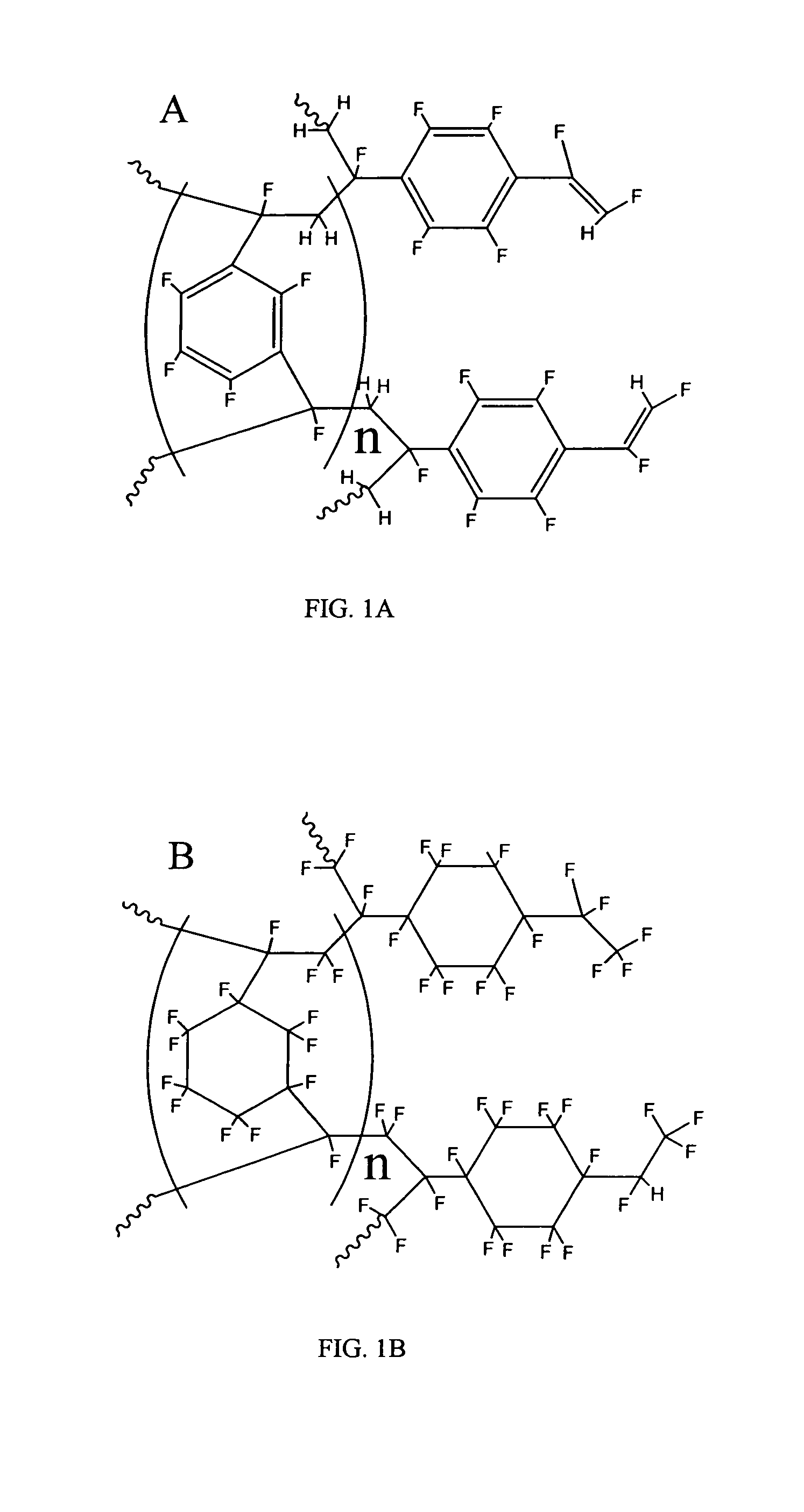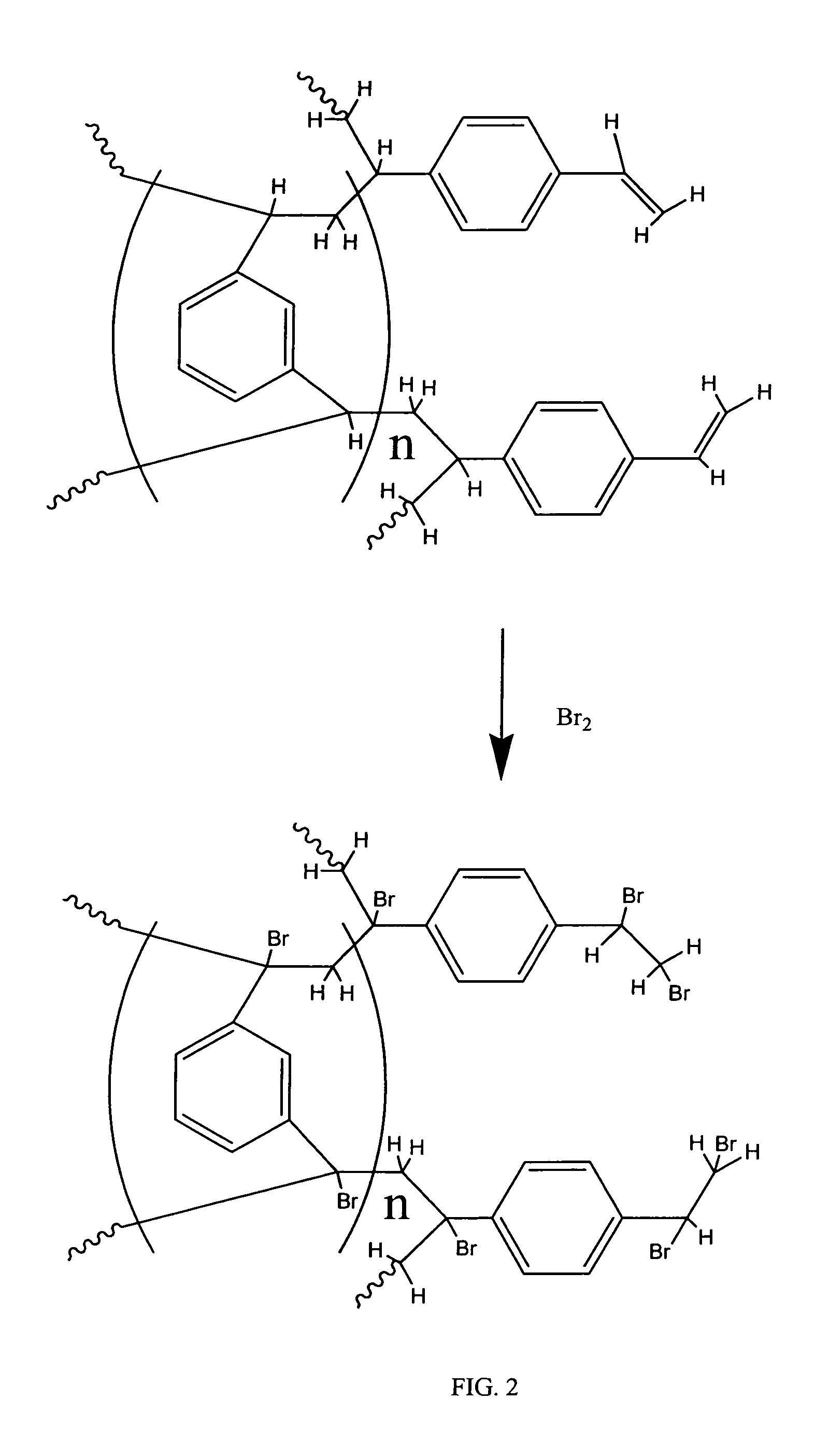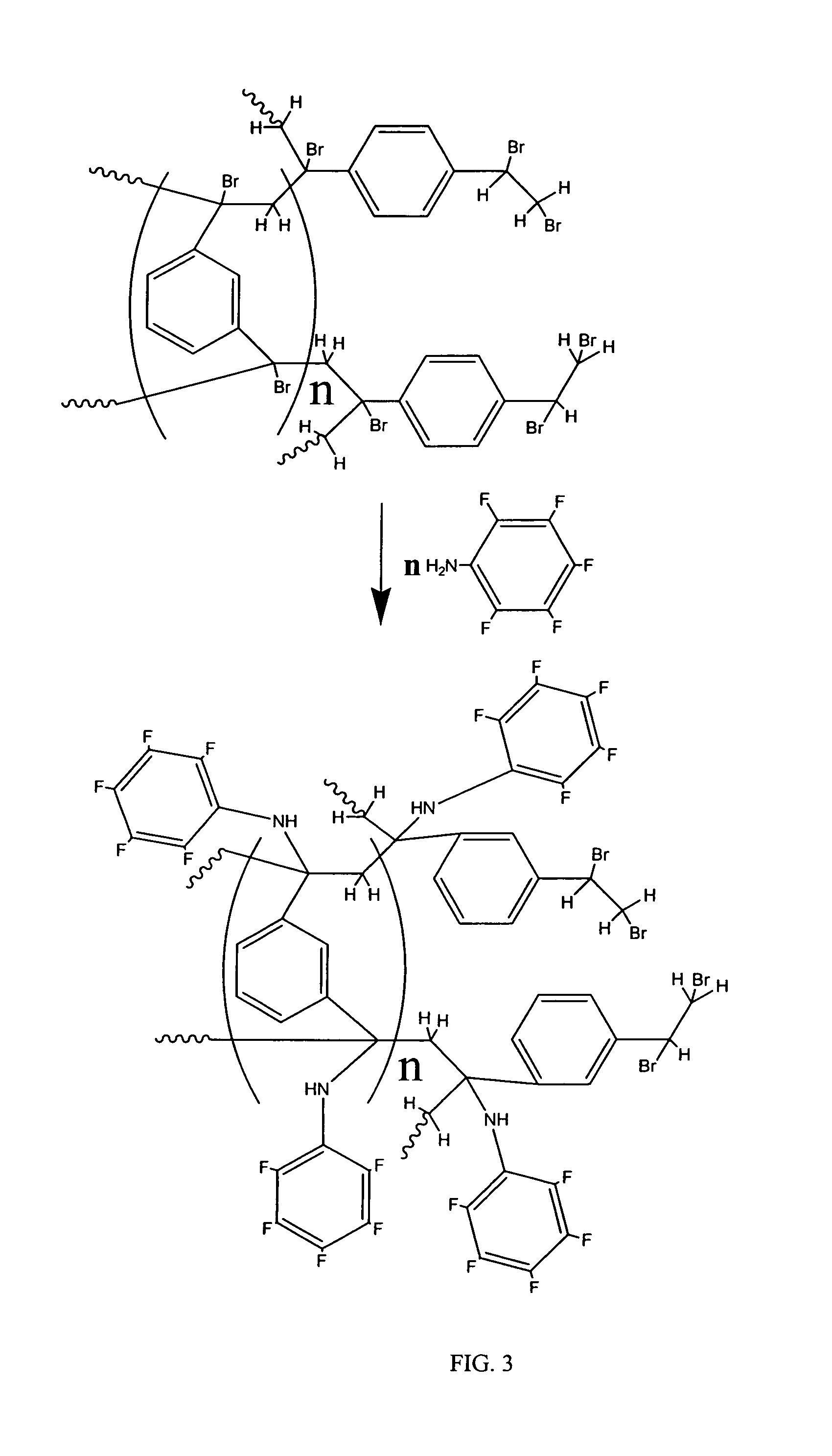Coated polydivinylbenzene beads
a polydivinylbenzene and polydivinylbenzene technology, applied in the direction of solid sorbent liquid separation, separation process, chemistry apparatus and processes, etc., can solve the problems of limited gpc/sec maximum eluent velocity practicable, significant influence on resolution, etc., to achieve high flow rate, high resolution, and rapid but efficient separation
- Summary
- Abstract
- Description
- Claims
- Application Information
AI Technical Summary
Benefits of technology
Problems solved by technology
Method used
Image
Examples
example 1
A Representative Example
Bromination of Base Polydivinylbenzene Gel
[0111]To 450 grams of 1000 A Jordi DVB gel (Jordi FLP, Bellingham, Mass.) was added 1500 mL of glacial acetic acid. The mixture was stirred until a homogeneous slurry. Then 10 grams of VAZO®67 (Dow) was added into above slurry. After stirring about 10 minutes at room temperature, the reaction temperature was increased to 75-80 Celsius degrees. At this time, another 10 grams of Vazo67 were added. Subsequently, 40 mL of bromine (liquid) was slowly added to above slurry dropwise with stirring. The reaction mixture was stirred overnight (around 16 hours) and then cooled to room temperature. The brominated gels were filtered and washed by 1000 mL water / methanol (20 / 80) twice and then methanol 2×1000 mL. The brominated Gels were dried at 70 Celsius degrees overnight to give 530 g brominated gel product according to the invention.
example 2
A Representative Example
Amination of Brominated Gel
[0112]To a round-bottom flask was added brominated 1000 Å Jordi DVB gel (200 g) that was 10 μm in diameter followed by methanol (700 mL). The solution was then stirred until a homogeneous mixture was obtained. 2,3,4,5,6-Pentafluoroaniline (30 g) was then added and the mixture was stirred for one hour at room temperature. The temperature was then increased to 60-65° C. being careful not to exceed 75° C. and stirring was continued for sixteen hours. The mixture was allowed to cool and then filtered. Two portions of methanol (200 mL) and one portion of dichloromethane (300 mL) were then used to wash the filtered gel. The gel was then dried by conventional oven treatment at 60-70° C. for 6 hours to obtain 210 g of a light yellow colored powder.
example 3
A Representative Example
Amidation of the Secondary Amine Groups
[0113]To a round-bottom flask containing 200 g of brominated gel which had undergone the amination procedure described above (Example 2) was added chloroform (600 ml). The mixture was then stirred until it was homogeneous. Then trifluoroacetic anhydride (20 mL) was added. The solution was then stirred for twenty four hours, after which it was filtered. The filtered gel was then washed with 2 portions of methanol (300 mL). The product is a fluorinated, amidated polydivinylbenzene gel comprising microbeads according to an embodiment of the invention.
PUM
| Property | Measurement | Unit |
|---|---|---|
| diameter | aaaaa | aaaaa |
| diameter | aaaaa | aaaaa |
| length | aaaaa | aaaaa |
Abstract
Description
Claims
Application Information
 Login to View More
Login to View More - R&D
- Intellectual Property
- Life Sciences
- Materials
- Tech Scout
- Unparalleled Data Quality
- Higher Quality Content
- 60% Fewer Hallucinations
Browse by: Latest US Patents, China's latest patents, Technical Efficacy Thesaurus, Application Domain, Technology Topic, Popular Technical Reports.
© 2025 PatSnap. All rights reserved.Legal|Privacy policy|Modern Slavery Act Transparency Statement|Sitemap|About US| Contact US: help@patsnap.com



